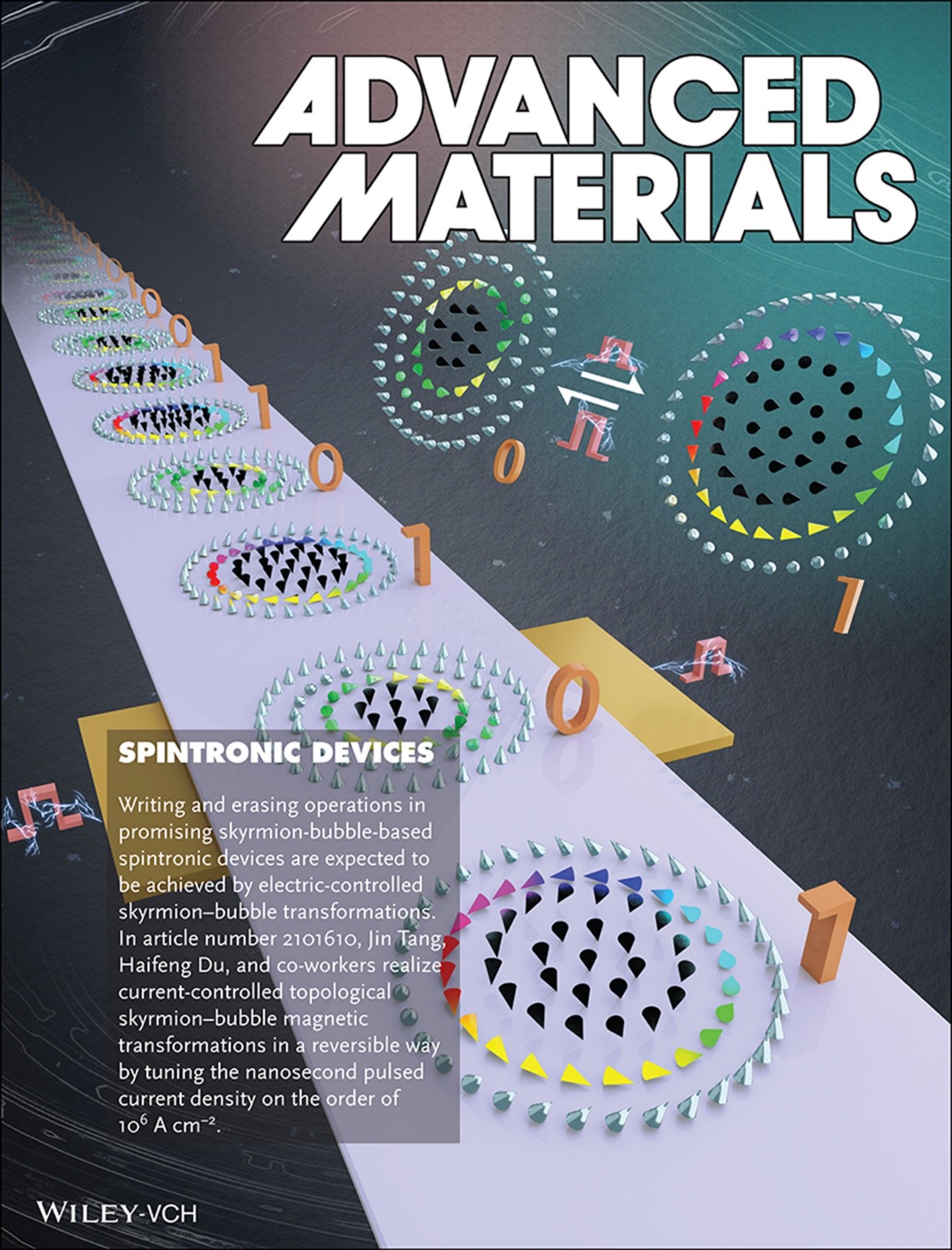Recently, researchers led by Prof. DU Haifeng from the High Magnetic Field Laboratory (HMFL) of the Chinese Academy of Sciences, in collaboration with Prof. XIONG Yimin, Dr. WANG Yihao and LI Junbo of HMFL, and Soh Yona from Paul Scherrer Institute in Switzerland, have achieved current-controlled topological magnetic transformations at room temperature by tuning the pulse current.
Topology is linked to the properties of a geometric object that are preserved under continuous deformations. It means that there are not any possible continuous transformations between any of two objects with different topological properties. In Fe3Sn2, there are two types of objects: topological non-trivial skyrmions and topological trivial magnetic bubbles or stripe.
In previous study, researchers from HMFL have proposed a strategy for design of magnetic memories and realized it in Fe3Sn2 and achieved the topological transformation between skyrmions and bubbles by magnetic field. However, the field method is not compatible with spintronics devices, making it urgently to develop electrical method to realize topological magnetic transformation.
To overcome that problem, they used focus ion beam technique, a method usually used in nanoscience, to prepare a nanodevice of Fe3Sn2. Equipped with home-made electrical measurement system, the researchers studied the dynamics of the magnetic structure in the nanodevice.
They found that with a tilt field to the nanodevice, both the skyrmions and bubbles are stable, and can transform into each other by tuning the nanosecond pulse current. With high current density, the skyrmions turn into magnetic bubbles, however, the magnetic bubbles turn into skyrmion when the current density is low.
They also explored the mechanism behind this current-controlled topological magnetic transformation. They found that the magnetic bubble to skyrmion and skyrmion to magnetic bubble transitions could be attributed to the spin transfer torque effect and the Joule heating effect of the pulse current, respectively.
The highly repeatable and reversible skyrmions to magnetic bubbles or stripes topological magnetic transitions are expected to promote the development of reliable, low-energy and high-efficiency topological spintronic devices in the future.








